Sando's Guide to Night Stalker
Sando
September 2, 2015
Introduction
 Night Stalker is a classic ganking hero with an interesting twist - underpowered by day, overpowered by night. He's a hero who forces the opposition to play a different style, or suffer the consequences.
Night Stalker is a classic ganking hero with an interesting twist - underpowered by day, overpowered by night. He's a hero who forces the opposition to play a different style, or suffer the consequences.
While he's not a common pickup in the pro scene, he has been chosen occasionally in important matches, and can make a powerful counter to many of the super mobile heroes that are popular in the current meta.
Strengths and Weaknesses
+ Tanky hero who can soak up a lot of punishment
+ Spammable nuke/slow/mini-stun
+ Long 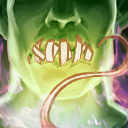 Silence which also causes misses
Silence which also causes misses
+ Fantastic movement and attack speed bonus at night
+ Can restrict enemy vision and dominate the map
- Not the best laner
- Quite level dependent
- Slow farming speed
- Very single target focused
- Quite slow during the daytime
Void

This is a very useful spell - a powerful nuke, combined with a movement/attack slow and a mini-stun. It's an essential part of your ganking kit, and makes you a well rounded hero killer.
Due to the relatively low mana cost, this can be a useful spell in lane for either grabbing a few last hits, or potentially harassing the opposition if they went light on consumables.
One thing to be aware of is that despite the low cooldown time, it does offer a window to enemy players where they can TP out once you've used it. It's the only stun you have, so be cautious about throwing it too early if your target has a TP scroll, and you don't have backup.
Like all your abilities, it's most effective at night, with a longer duration.
Hunter in the Night
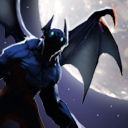
Your passive...and what a skill it is. At least one point in this is essential by the time first night comes around - you gain a large boost to both your movement and attack speed as your wings unfurl and you increase in power.
This is one of the best early game passives, and is still useful later on too. The set increase in attack speed helps determine our choice of boots and items - generally we prioritise raw damage and strength to maximise the benefit of this.
Darkness
Darkness
This skill sometimes gets a bad rep - it's hardly 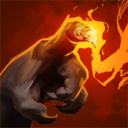 Finger of Death or
Finger of Death or  Shadow Dance. However, it's a crucial part of your kit, and can also carry advantages for your team.
Shadow Dance. However, it's a crucial part of your kit, and can also carry advantages for your team.
The first advantage is that it lets you extend the night time, increasing the period when you're most effective, and reducing enemy vision.
Secondly, it lets you summon a temporary night time during the day - allowing you to react to situations where you need your full set of bonuses for a brief period. This might be a team fight, a gank, or to use your increased movement speed to flee.
Where possible, you want to avoid using Darkness during the day - partly because it means you have to wait longer until the real night time comes around (the day timer will be paused for the duration of your ult), and partly because it makes it really obvious that you're about to do something.
As the game progresses and your ult levels up, you should be using it regularly to extend the night time as long as possible.
Skill Builds
There aren't too many different ways of building  Night Stalker that really make sense.
Night Stalker that really make sense.
As a general rule,  Void should be maxed first - it's an all round really useful spell, and a major source of your damage.
Void should be maxed first - it's an all round really useful spell, and a major source of your damage.
 Hunter in the Night should be maxed second. It gives substantial bonuses at each level. At least one early value point is essential before the first night time.
Hunter in the Night should be maxed second. It gives substantial bonuses at each level. At least one early value point is essential before the first night time.
A value point in 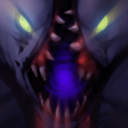 Crippling Fear is essential against nearly every team composition. Unless they literally have no useful active spells and none of them can manfight, then it's extremely useful.
Crippling Fear is essential against nearly every team composition. Unless they literally have no useful active spells and none of them can manfight, then it's extremely useful.
A lot of players routinely skip this, don't be one of them.
Darkness is a little trickier to judge. There may be situations where you want to take it at level 6, others where you leave it as late as level 10. Generally, I'd suggest delaying it as those early levels in  Void and
Void and  Hunter in the Night can be the difference between securing the kill, or dying yourself.
Hunter in the Night can be the difference between securing the kill, or dying yourself.
And you know my feelings on  Crippling Fear. Darkness doesn't directly help you in a gank where it's already night time.
Crippling Fear. Darkness doesn't directly help you in a gank where it's already night time.
However, it's a great reactive spell early on when you or your team get into trouble during the daytime. You're relatively slow and weak at this point, and being able to fully utilise your powers on short notice can be essential.
What I'd suggest is saving a skill point during the second daytime - you won't get much benefit from spending it on anything yet, so just keep it. If you suddenly need Darkness, you can have it. If you get through the day without needing it, you can invest that point in one of your other skills for the night.
Obviously support players have to be mindful of their slower levelling, and choose between extra killing/harassment with  Void against potentially missing out on
Void against potentially missing out on  Crippling Fear or
Crippling Fear or  Hunter in the Night by first night. The usual build is a single point in each initially, but you can adapt this as necessary.
Hunter in the Night by first night. The usual build is a single point in each initially, but you can adapt this as necessary.
Roles
This is quite an interesting area for him at the moment. His classic role is mid - where he has access to the quick farm and levels he needs to be effective and snowball.
However, he's not got a particularly strong lane presence, and tends to lose in an equally skilled matchup against many common mid heroes. He then tends to abandon the lane to roam for kills, leaving the enemy mid to do as they please.
The offlane might seem a reasonable choice, but his slow base movement, lack of escapes and inability to contest the lane tend to make that a bad option without an effective support.
The final option is to play him as a greedy #4, as demonstrated by LaNm in the recent International. He's not the most natural fit, but can be made to work, especially as a counter to the enemy draft.
Playstyle
You have very specific periods when you're most effective, and this tends to govern your timing windows. It also makes you pretty predictable, and this is something we have to consider.
1st Day: BAD. This is generally a difficult time for you. The quality of your start will often impact on your ability to snowball successfully. While you have decent attack damage and are fairly tanky, you're not the best laner in the world.
Get as much farm and experience out of the lane as possible, and avoid dying. Any set backs at this point will be very painful.
1st Night: GOOD. Show time. Your wings unfurl, your speed increases, and suddenly you're the most powerful hero on the map. It's vital to try and leverage this power with kills - you're a slow farmer. However, this is also extremely predictable - it's night time,  Night Stalker will start ganking. Smart enemies will draw back to safer positions, group up, or setup ambushes to counter you.
Night Stalker will start ganking. Smart enemies will draw back to safer positions, group up, or setup ambushes to counter you.
2nd Day: Gaaah. Suddenly your hero is slow again and much of your control is gone. Hopefully you got a good tally of kills from the 1st night, or at least severely disrupted enemy farming. It's time to go back to hitting creeps and staying out of trouble. You're not a brilliant farmer, but it's important to sustain your income as well as possible. Don't forget that with enough equipment you're still quite dangerous, so don't avoid fights completely if you can help.
Subsequent Nights: this is the time for you to get stuff done. Try and make sure your team are aware of this too. Try to time fights, ganks and pushes to coincidence with your strongest time. Days should continue to be used primarily for farming.
Ganking
 Night Stalker is not the most subtle of gankers. He's a vicious clawing monstrosity, and you have to be aggressive with him. The key is balancing that aggression so that you pick the right targets, and use the right combination of abilities to get the job done.
Night Stalker is not the most subtle of gankers. He's a vicious clawing monstrosity, and you have to be aggressive with him. The key is balancing that aggression so that you pick the right targets, and use the right combination of abilities to get the job done.
Before I gank, here are some of the things I try to think about:
1) How many enemy heroes are present? Do they have abilities which can stop me? Can they escape with an ability?
2) Do I have any backup from my team to help me out? Do they have stuns?
3) Check for TP scrolls - if I  Void somebody to slow and damage them, they can TP out before it cools down. I need to be aware of this unless an ally with a stun can stop them.
Void somebody to slow and damage them, they can TP out before it cools down. I need to be aware of this unless an ally with a stun can stop them.
4) Pick a main target. Figure out who you need to use  Crippling Fear on. This will either be a hero with an escape if they're your main target, or a hero with a powerful ability that you don't want them to use.
Crippling Fear on. This will either be a hero with an escape if they're your main target, or a hero with a powerful ability that you don't want them to use.
Tips for Successful Ganking
So lets look at that 1st night - it's a vital time in most games and where you
will ultimately succeed or fail. Assuming you got a reasonable start, you should have at least 1 point in each of your primary skills, and hopefully some more in  Void. Also, some basic equipment that will help you gank successfully.
Void. Also, some basic equipment that will help you gank successfully.
Bad players will routinely be out of position, alone, low on health, and/or with no vision around the map to spot you. Enjoy it while it lasts. Good players on the other hand will not be giving you such easy targets. As soon as you leave mid, they'll call missing and be on their guard...how do you work around this?
1) Be Unpredictable. It's pretty obvious you'll be looking to gank during the first night, so you need to at least hide your destination. Don't run past obvious  Observer Ward spots, don't move in your intended direction while the enemy has vision of you. Be deceptive.
Observer Ward spots, don't move in your intended direction while the enemy has vision of you. Be deceptive.
2) Arrive unexpectedly. Your best friend here is useful runes - invisiblity, illusions, haste etc. They're great for getting you into position and setting up for easy kills. They're not reliable however, so sometimes you also have to look at  Smoke of Deceit and Town Portal Scrolls. For example, let yourself be seen mid, then drop back into the trees and TP to a sidelane unseen.
Smoke of Deceit and Town Portal Scrolls. For example, let yourself be seen mid, then drop back into the trees and TP to a sidelane unseen.
3) Work with allies. There's no point ganking a lane if you're 1v3 and your allies are unable to help you, maybe you can get a quick pickoff and get out, but more likely you'll die. You can be the point of the wedge though, and have allies follow your lead.
4) Be patient. While you are on a timer until daylight arrives, don't rush into mistakes or obvious traps. If the opposition are heavily grouped or sitting on their towers all the time...relax. You're crippling their farm, just by being alive. Hopefully your team will take advantage of this to accrue a lead. Keep looking for openings, and claw a few enemy neutrals to death in the meantime.
Psychology
The best  Night Stalker games are the ones where you manage to bag some early kills and set the tone of the game. Psychology is an important part of Dota, especially in pub games where strangers don't have the trust and understanding that organised teams have built up.
Night Stalker games are the ones where you manage to bag some early kills and set the tone of the game. Psychology is an important part of Dota, especially in pub games where strangers don't have the trust and understanding that organised teams have built up.
The whole point of  Night Stalker is to really emphasise the day/night cycle.
Night Stalker is to really emphasise the day/night cycle.
The other is to inspire fear.
I know it seems to be stretching the point somewhat - this is a isometric wizard em up strategy game after all - but people's emotions frequently effect how they play.
Ok, so you're not going to have them hiding behind the sofa in terror, but you can negatively impact the opposition's cohesion, morale and efficiency if you play well.
Players who are being super careful because they've been killed 3-4 times by you are reluctant to go and ward alone. They hang around in groups instead of spreading out to farm efficiently. They may retreat unnecessarily to safe positions because they're worried you've disappeared from the map.
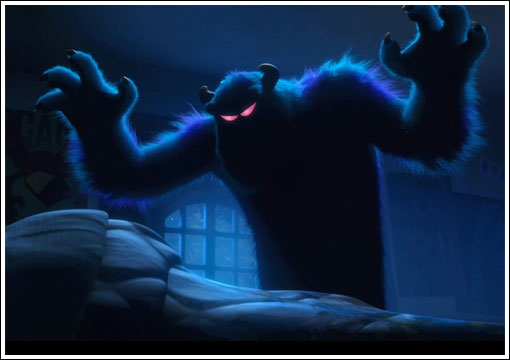
Like all horror film monsters - sometimes you're at your most effective when they can't see you. Suddenly you're hiding behind every tree, in every corner of the map they can't see. Try to give them as little information as possible, and they'll start to expect the worst.
For example, in one game I actually managed to save an ally from a 3 man gank, without even being there. I'd already given them a fair savaging in the first two nights, and instantly retreated when I cast Darkness during the day. That nasty
 Night Stalker
Night Stalker was about to burst out of the nearby jungle and kill them all. As it happened, I was miles away and had no way of getting there, but the threat was enough.
Itemisation
 Night Stalker is a classic snowballing semi-carry, with an early timing window of 4 minutes on wards. With enough equipment, you can remain relevant later in the game, but you're not a hard carry.
Night Stalker is a classic snowballing semi-carry, with an early timing window of 4 minutes on wards. With enough equipment, you can remain relevant later in the game, but you're not a hard carry.
While your first choice will always be to snowball successfully and semi-carry, if this hasn't happened for you then head towards the utility builds and remain useful for your team.
Mid / Semi-Carry
Starting:


If we're playing mid NS, we always tend to go for a  Bottle rush. You may need to pick up a
Bottle rush. You may need to pick up a  Stout Shield against some heroes, but generally want to avoid it.
Stout Shield against some heroes, but generally want to avoid it.
Core:



A  Bottle is great for a roaming ganker, giving you sustain and access to store runes. I'd also highly recommend the
Bottle is great for a roaming ganker, giving you sustain and access to store runes. I'd also highly recommend the  Urn of Shadows - more strength is +6 damage and 114 hp. Boosting your mana regeneration is helpful too, but really this is about the ability to heal 400 HP quickly, and throw out 150 DoT to finish off enemies.
Urn of Shadows - more strength is +6 damage and 114 hp. Boosting your mana regeneration is helpful too, but really this is about the ability to heal 400 HP quickly, and throw out 150 DoT to finish off enemies.
Our choice of boots is generally easy - you have high movement and attack speed from your passive, adding raw damage and extra sprinting power to it is an obvious choice.
Optional:

A powerful extra slow, and cheap at the price. The only thing to consider is whether you have a slot available for it.
Extension:




Hopefully you managed to pick up your core pretty quickly, and are looking to snowball into even more powerful items. These choices are pretty midgame focused, but I'd suggest they're still at least somewhat useful later on - with the  Armlet of Mordiggian being the least scalable.
Armlet of Mordiggian being the least scalable.
The main thing to consider here is which one will help you most come the second night, when it's party time again.
The Armlet gives you something of everything - more HP, more damage and more armour. It's great for eating nukes and keeping going, but less useful if you get locked down for several seconds and keep losing HP. It can really allow you to continue bullying most enemy heroes though.
The BKB pickup is more when you're encountering a lot of hostile enemy abilities and it's costing you the ability to bag those kills. An angry  Night Stalker with a full BKB in the midgame is pretty terrifying for most enemy heroes. The damage and strength is pretty good too.
Night Stalker with a full BKB in the midgame is pretty terrifying for most enemy heroes. The damage and strength is pretty good too.
 Skull Basher is most useful if you're encountering a lot of enemies escaping
Skull Basher is most useful if you're encountering a lot of enemies escaping
via TP, and also scales well into the late game, upgrading to  Abyssal Blade. With your attack speed boost from HITN, it's fairly reliable.
Abyssal Blade. With your attack speed boost from HITN, it's fairly reliable.
The  Aghanim's Scepter upgrade is more about map control than damage, so can be a good choice if your team has already taken down several enemy towers, you're constantly being spotted by
Aghanim's Scepter upgrade is more about map control than damage, so can be a good choice if your team has already taken down several enemy towers, you're constantly being spotted by  Observer Wards or you're worried about enemy ambushes. It can be great against heroes who like to hide in the trees.
Observer Wards or you're worried about enemy ambushes. It can be great against heroes who like to hide in the trees.
Luxury:




Most late game items actually work pretty well on  Night Stalker, and I've no issue if you want to pick up a
Night Stalker, and I've no issue if you want to pick up a  Monkey King Bar,
Monkey King Bar,  Daedalus or
Daedalus or  Satanic if appropriate.
Satanic if appropriate.
However, these 3 would usually be my go-to items for late game.
 Assault Cuirass may not seem the most obvious choice as you've already got improved attack speed from your passive, but the armour reduction will do a lot for your team, and it also helps your survivability a lot.
Assault Cuirass may not seem the most obvious choice as you've already got improved attack speed from your passive, but the armour reduction will do a lot for your team, and it also helps your survivability a lot.
 Abyssal Blade is a beast - you may well have already picked up a
Abyssal Blade is a beast - you may well have already picked up a  Skull Basher, and this is a natural extension of that. It gives you a lot of extra damage, plus a reliable BKB piercing stun.
Skull Basher, and this is a natural extension of that. It gives you a lot of extra damage, plus a reliable BKB piercing stun.
 Heaven's Halberd is a more of a situational option, but a good one. It has a nice build up and works well against fat enemy carries.
Heaven's Halberd is a more of a situational option, but a good one. It has a nice build up and works well against fat enemy carries.
Support:
Your needs and income are very different here, and you primarily focus on utility over outright damage. The major decision here is whether to focus bigger or smaller items - do you pickup multiple early optional items like
 Medallion of Courage
Medallion of Courage, or try to build into bigger ones like
 Pipe of Insight
Pipe of Insight?
As always, the choice depends on the situation - how much gold you have coming in, what your team needs, etc.
Map Control Night Stalker
Many new players look at  Night Stalker's
Night Stalker's  Aghanim's Scepter upgrade and think it sounds like the weakest thing ever. No damage? No extras? Some extra vision? Meh.
Aghanim's Scepter upgrade and think it sounds like the weakest thing ever. No damage? No extras? Some extra vision? Meh.
Higher level players are licking their lips however - combined with Darkness, and a  Gem of True Sight, this is a powerful way to grab map control, and makes you almost impossible to catch by surprise during the night time.
Gem of True Sight, this is a powerful way to grab map control, and makes you almost impossible to catch by surprise during the night time.
The enemy has all their sources of vision reduced, while your team enjoys flying vision over a large area - letting you see enemies in trees, up hill and other potential ambush positions. Combine this with a gem, you can sweep the map for wards and take away vital game information.
This is most impactful in games with a lot of manuevering, where pick offs and "who gets the best initation" are really important. Having good map information doesn't help you much against enemies who could brute force high ground through damage/teamfight.
Picking Night Stalker
Now you've got a feel for the kind of heroes in the game that let  Night Stalker excel, you can start making good decisions about when to pick him. He is a situational choice, but offers a strong and unusual skillset.
Night Stalker excel, you can start making good decisions about when to pick him. He is a situational choice, but offers a strong and unusual skillset.
+ You may have a relatively easy matchup in mid
+ Opposition is relying on mobility heroes/abilities
+ Opponents will be easy to pick off if slowed/silenced
+ Additional vision/map control could be vital
+ Opponents are poorly organised
+ Opposition running slow AFK jungler (aka FOOD)
- No good place for you to lane/get xp (either as mid or greedy #4)
- Little support from your team to be aggressive
- Enemy have multiple ways of saving/responding quickly
- Game most likely to be centered around pushing/teamfights
- Enemies have great map control/vision abilities
 Tango (Shared)
Tango (Shared)




























































Quick Comment (16) View Comments
You need to log in before commenting.